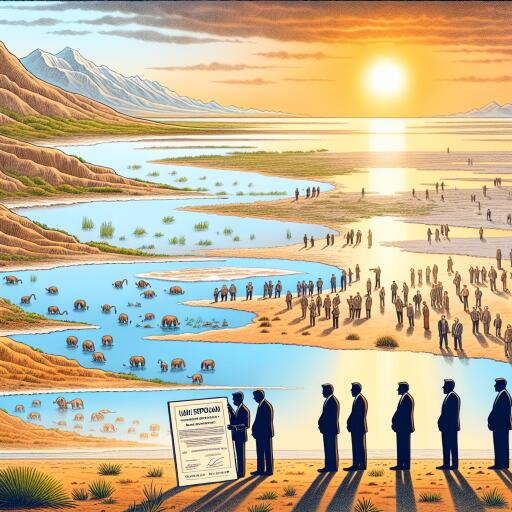
As Great Salt Lake Dries, Utah Embraces Environmental Action Despite Trump Climate Skepticism
From a ranch bordering the shrinking Great Salt Lake, Joel Ferry, a Utah-native and Republican farmer, witnesses the stark realities of climate change firsthand. Over four decades, he has observed the lake’s surface diminish by two-thirds.
While Trump’s comments downplaying sea level rise as trivial still resonate among many conservatives, Ferry sees them as light-hearted banter not fully taken to heart. In Utah, where a significant portion of the population aligns with the Republican Party, loyalty to the GOP persists despite reservations about Trump’s approach to climate issues.
A pivotal moment for Utah arrived in 2022 when the Great Salt Lake reached unprecedented lows. This environmental crisis resulted from compounded factors: excessive water usage by agriculture and mining, coupled with a two-decade drought. The resulting hypersalinity devastated brine shrimp populations—an economic staple—and led to the disappearance of migratory birds due to the absence of their insect prey.
“It genuinely alarmed scientists and the community, fearing that the lake might dry up entirely,” stated David Parrott, deputy director of the Great Salt Lake Institute at Utah’s Westminster University.
If the lake were to vanish, exposed sediments laden with arsenic and toxic metals could become airborne during dust storms, severely contaminating the air. Parrott warns this could transform the region into an inhospitable, barren landscape.
In response to these threats, a unified call to action has emerged among Utah Republicans. “Utah exemplifies a staunchly conservative state making environmentally conscious choices,” noted Ferry, emphasizing the need for Republican leadership to prioritize environmental issues nationally.
Nationally, however, Trump’s environmental policies diverge significantly from Utah’s pragmatic approach. If re-elected, Trump’s proposed withdrawal from the Paris Climate Agreement and a renewed focus on fossil fuel extraction could severely impact efforts to slow the global temperature rise.
Parrott, echoing concerns about Trump’s potential presidency, stated, “Another Trump term could be catastrophic for the environment and for the Great Salt Lake.” Even as local Republicans work commendably towards sustainable solutions, each incremental increase in global temperatures necessitates tougher and often unpopular measures—such as water price hikes and irrigation bans.
In Salt Lake City, while many conservative citizens express concern over the lake’s health, the sentiment persists that decisions should remain local. Voter Bill Clements, 75, represents those who resist federal intervention, remarking, “Washington shouldn’t dictate our regional matters.”
Recent years have seen wetter than average winters, offering some respite and helping the lake level rise, yet still remaining insufficient for lasting preservation. Clements and others attribute these fluctuations to natural cycles rather than climate change, maintaining a skeptical stance on the climate crisis narrative.
This skepticism poses challenges for effective environmental policy advocacy in Utah, as balancing local beliefs with scientific initiatives proves complex. As Utah faces the palpable consequences of environmental change, its efforts in ecological conservation may serve as a pivotal case study for integrating conservative values with environmental action.





Leave a Reply